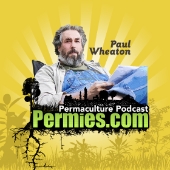
 3
3




--
Read my mind at
http://www.mnhometown.com/blog
TWITTER.COM/JAKEDOLSON
 14
14




 6
6




Living the good life out with the wildlife
 2
2




 3
3




--
Read my mind at
http://www.mnhometown.com/blog
TWITTER.COM/JAKEDOLSON
 3
3




Idle dreamer
 7
7





 3
3




 3
3





"All the world's problems can be solved in a garden." - Geoff Lawton
Check out my site at: www.tcpermaculture.com
 2
2




Brenda
Bloom where you are planted.
http://restfultrailsfoodforestgarden.blogspot.com/




 I had a favorite one once. It was in front of my store front, and it was as mentioned a nice dappled light under the tree and we had many flowerpots arraigned all over the front of the building. because it was trimmed ..I grew many sun-lovers under that tree. I also was told by the landlord that the trees have self nitrogenating roots. It also had humming bird nests up high. It has since fallen down.. luckily it did not crush anything in the alley due to an iron sculpture which held it up, one of life little miracles. It split down the center one half still standing, they took it all away. I still think the sky looks naked without it there. My two cents is.... I think you lucked out on trees and advice...congratulations on your new place!
I had a favorite one once. It was in front of my store front, and it was as mentioned a nice dappled light under the tree and we had many flowerpots arraigned all over the front of the building. because it was trimmed ..I grew many sun-lovers under that tree. I also was told by the landlord that the trees have self nitrogenating roots. It also had humming bird nests up high. It has since fallen down.. luckily it did not crush anything in the alley due to an iron sculpture which held it up, one of life little miracles. It split down the center one half still standing, they took it all away. I still think the sky looks naked without it there. My two cents is.... I think you lucked out on trees and advice...congratulations on your new place! Roxanne ...AKA Wilde Hilde
"Ensnar'd in flowers, I fall in the grass."-Marvell




 3
3




--
Read my mind at
http://www.mnhometown.com/blog
TWITTER.COM/JAKEDOLSON








Living the good life out with the wildlife




Brenda
Bloom where you are planted.
http://restfultrailsfoodforestgarden.blogspot.com/
 2
2




 2
2




Harry: I can't believe we drove around all day and there's not a single job in this town. There is nothing, nada, zip!
Lloyd: Yeah, unless you wanna work 40 hours a week!
 2
2




 1
1




Mike Tennyson wrote:Has anyone had problems with box elder beetle infestations as a result of these trees?
 . To me, it seems like a built in soil building system, a fast growing, quick living tree that creates a lot of biomass and can grow in pretty much any soil(prefers wet/compact soil however). The beetles eat all those seed and break them down into 'soil'.
. To me, it seems like a built in soil building system, a fast growing, quick living tree that creates a lot of biomass and can grow in pretty much any soil(prefers wet/compact soil however). The beetles eat all those seed and break them down into 'soil'.




Brenda
Bloom where you are planted.
http://restfultrailsfoodforestgarden.blogspot.com/
 1
1




 1
1












Clear skies,
Brad Vietje
Newbury, VT




“The most important decision we make is whether we believe we live in a friendly or hostile universe.”― Albert Einstein








If you live in Ontario, check what we've got in the fruit/nut nursery: https://www.willowcreekpermaculture.com/trees-for-sale/
My wife's permaculture homeschooling and parenting site: http://www.familyyields.com

 5
5




- Tim's Homestead Journal - Purchase a copy of Building a Better World in Your Backyard - Purchase 6 Decks of Permaculture Cards -
- Purchase 12x Decks of Permaculture Cards - Purchase a copy of the SKIP Book - Purchase 12x copies of Building a Better World in your Backyard
 5
5




 4
4




Celtic/fantasy/folk/shanty singing at Renaissance faires, fantasy festivals, and other events in OR and WA, USA.
RionaTheSinger on youtube.
Pop-up garden/vintage+ yard stand owner.
 8
8




Where my chicks have roamed no grass grows!
 3
3




 6
6




 4
4




Jake Olson wrote:
All areas with trees are infiltrated with Boxelder Trees. I know that we're supposed to learn from what happens naturally and work with nature, so here are my questions.
1. What does the existence of boxelder tell us? What is it about my land and the properties around it that makes boxelder happy?
2. Is there any practical use for this species besides making bonfires?
3. Are there any more useful permaculture species that would thrive in the same places that boxelders thrive?
Any ideas would be greatly appreciated.
 4
4




randyeggert.com
 3
3




 2
2









| I agree. Here's the link: http://stoves2.com |







